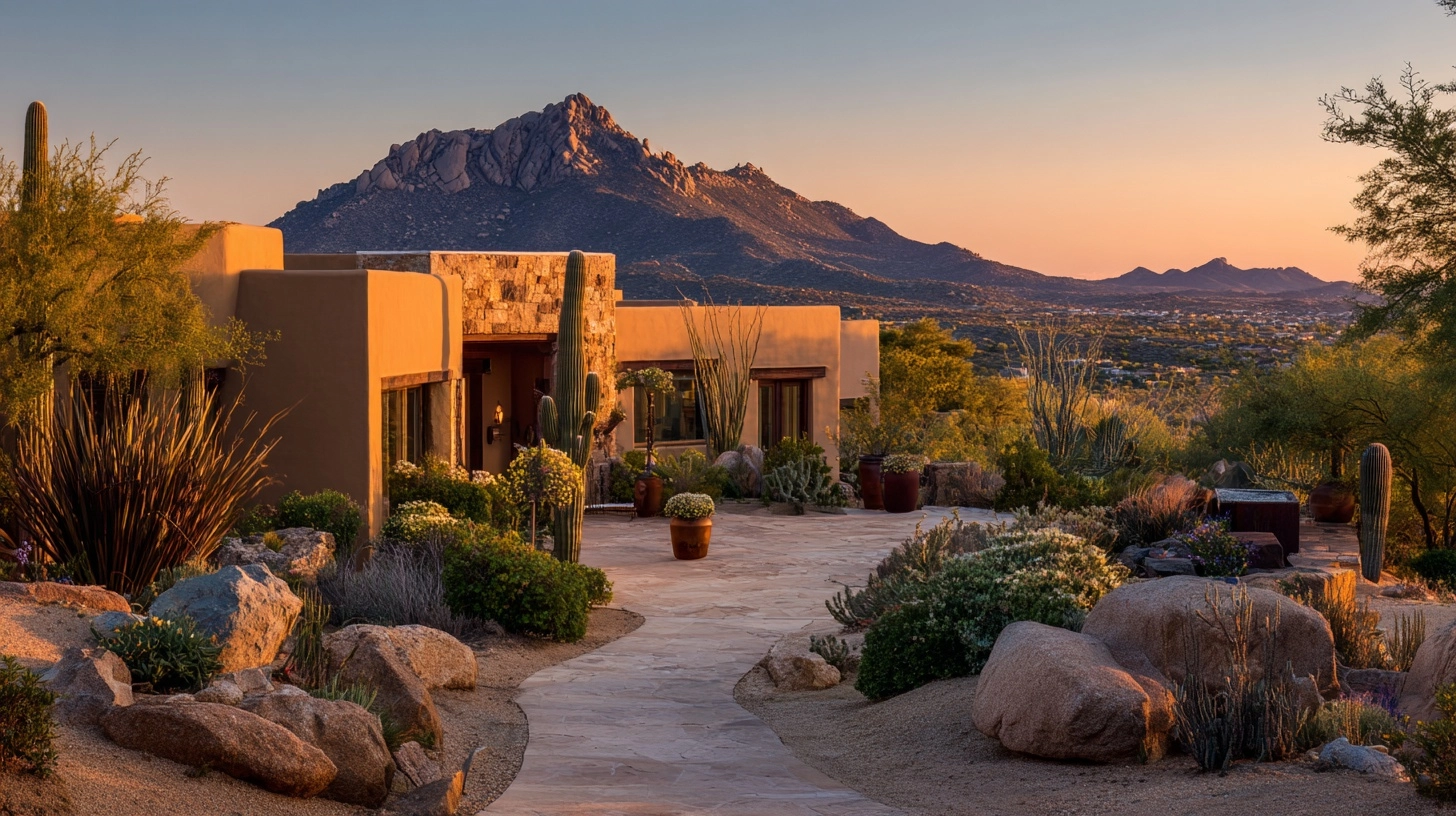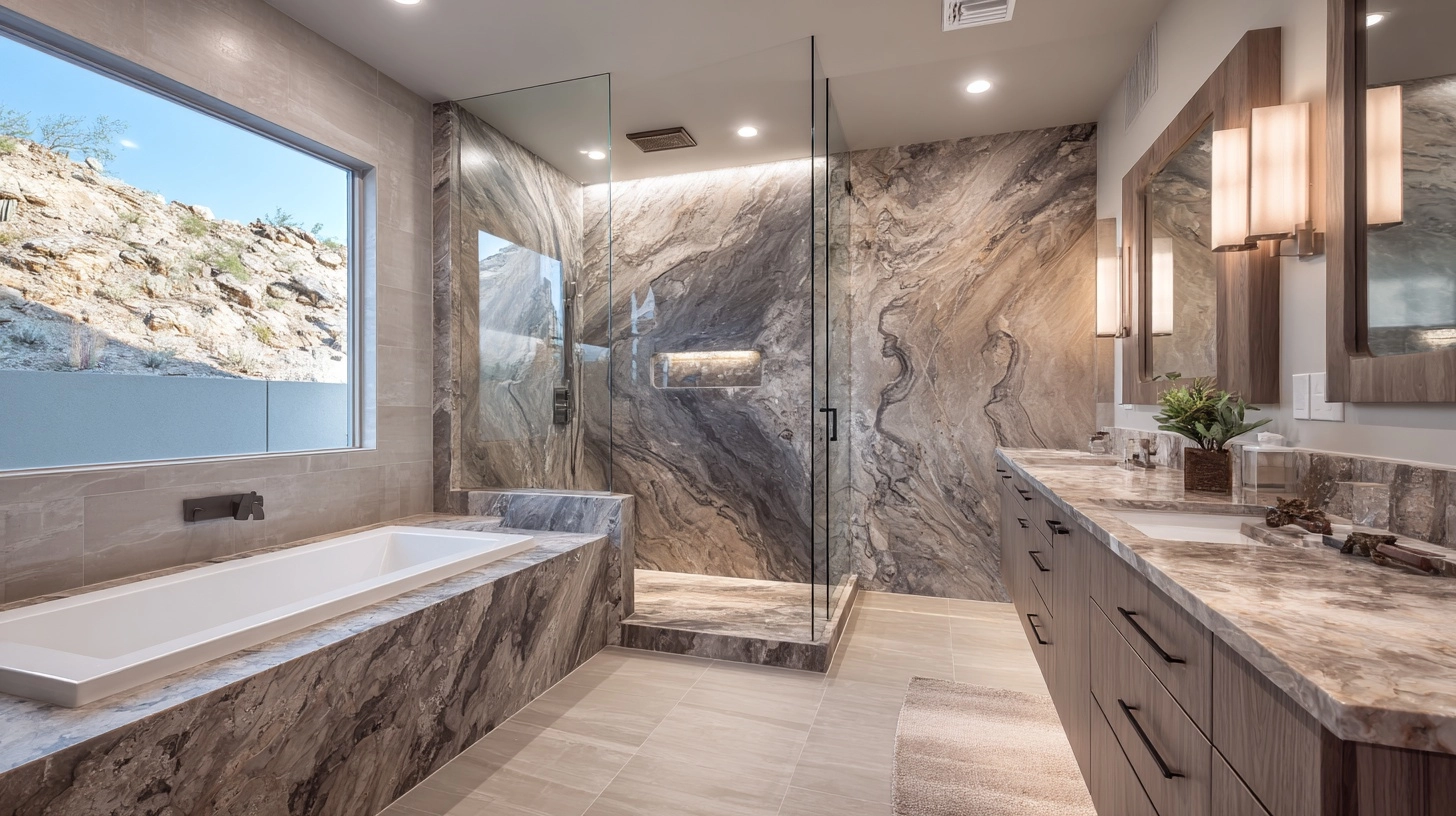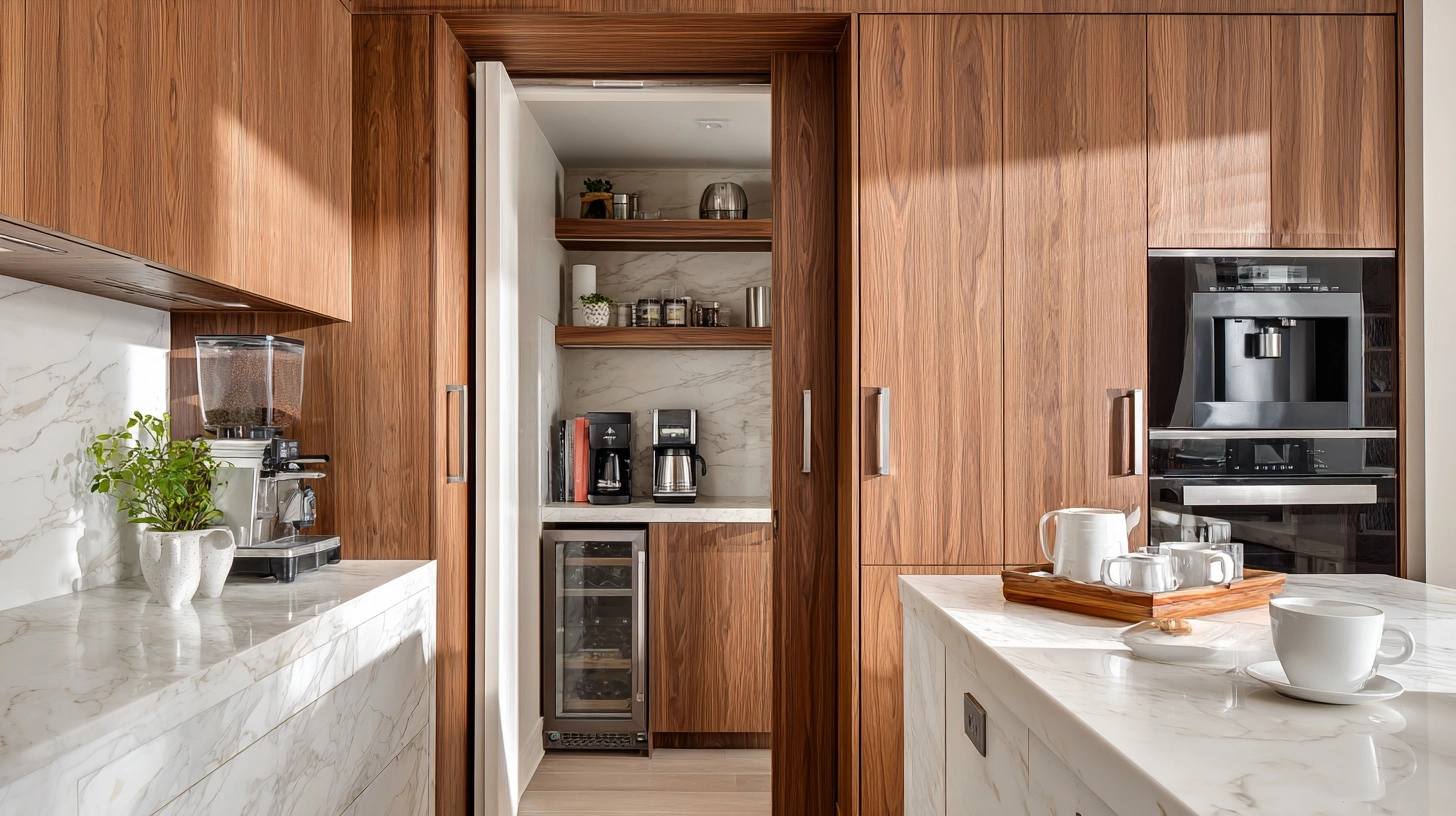
Warm Earthy Neutrals Taking Over Scottsdale Homes

Large-Format Porcelain Slabs: Smart Uses in AZ Homes

When it comes to building or renovating in desert climates, the stakes are high—extreme temperatures, relentless sun, and dry air put every structure to the test. Selecting materials that can endure these harsh conditions without sacrificing style can feel overwhelming, but it’s entirely achievable with the right strategy. This guide distills key principles drawn from industry insights and best practices across sun-drenched regions like Phoenix, Las Vegas, and beyond. The focus is on balance: durability, sustainability, and striking visual appeal. Whether you’re a construction professional, a design enthusiast, or a homeowner planning your desert retreat, you’ll find smart, actionable guidance to help bring resilient and architecturally compelling spaces to life.
Successful design in the desert starts with acknowledging what’s working against you—and with you. Unlike temperate zones, desert regions pose unique challenges that put conventional materials through the wringer. Let’s break down the primary environmental stressors:
Intense solar exposure leads to UV degradation and heat absorption, causing materials to warp, fade, or crack.
Wide temperature fluctuations (sometimes 40+ degrees in a single day) can result in structural stress, expansion, and contraction.
Low humidity contributes to material brittleness, while sudden monsoons can overwhelm surfaces unaccustomed to moisture.
Dust and sand, ever-present, infiltrate finishes and mechanical systems.
Given these factors, building in the desert requires thoughtful material selection at the outset. It isn’t just about “what looks good”—it’s about what survives, what maintains thermal comfort, and what will remain low-maintenance for decades.
The best approach is holistic:
Collaborate early with engineers and design teams to match materials to site-specific microclimates.
Consider lifecycle maintenance and longevity, not just upfront cost.
Seek out manufacturers with proven histories of success with desert installations.
Thoughtfully embracing the realities of your environment lays the groundwork for structures that are both enduring and visually distinct.
Certain materials have stood the test of time in arid climates, repeatedly proving their worth through performance and adaptability. Concrete, masonry, and stucco are favorites for a reason—they effortlessly bridge utilitarian needs with stunning potential for creative expression.
Concrete’s chief advantage is its thermal mass, absorbing daytime heat and releasing it slowly to maintain comfortable interiors. New innovations, such as insulated concrete forms (ICFs) and decorative concrete finishes, add further value. For exterior surfaces, specialty concrete mixes now include additives that reduce cracking and improve color retention, essential in relentless sunlight.
Masonry—particularly adobe, CMU (concrete masonry units), and clay brick—offers time-tested fortitude. Clay brick, for example, is naturally cool and can be laid in patterns that add visual intrigue. Veneer applications bring the aesthetic of natural stone without the structural load or cost. Masonry also shines in detailing: think feature walls, built-in benches, or wind screens with decorative blockwork.
Stucco’s flexibility in both texture and color complements modern and classic architectural styles. When properly installed and maintained, high-quality stucco provides a resilient, water-resistant skin that holds up beautifully for decades. Opt for acrylic-enhanced stucco finishes in lighter, reflective hues to minimize heat gain; these not only protect against cracking but also offer a broader palette for design experimentation.
Prioritize maintenance: Periodic inspections ensure integrity, especially after harsh weather.
Expert installation is non-negotiable—quality workmanship impacts longevity as much as material choice.
Integrate shading structures or overhangs to reduce direct sun exposure, protecting surfaces and extending lifespan.
Metal features, once limited to strictly industrial settings, are now a mainstay in desert architecture, celebrated for their structural integrity and striking aesthetics. The key is choosing alloys and finishes that not only resist corrosion but also celebrate contemporary design.
Steel—galvanized or coated—offers impressive strength for framing, fascias, and even exterior panels. Powder-coated steel resists chipping, fading, and corrosion, critical in sandy, sunbaked environments. Consider using steel for architectural accents, shading devices, or privacy screens, where its slim profile can introduce shadow play and depth.
Aluminum, inherently resistant to rust, is lightweight and versatile. Modern manufacturing makes it possible to specify finishes that mimic the warmth of wood or the ruggedness of weathered corten steel—without the maintenance headaches. For windows, doors, and screens, thermally-broken aluminum frames provide an extra measure of insulation, reducing condensation and improving comfort. For roofing or detailing, standing-seam aluminum in reflective shades minimizes heat absorption and delivers crisp visual lines.
Today’s designers are also specifying innovative metal claddings with specialized reflective coatings, which bounce back rather than absorb solar radiation. These updates not only boost energy efficiency but allow bold color choices that won’t fade over time.
Best practices include:
Always verify a material’s salt- and UV-resistance ratings if your site is near concentrated dust or has high ozone exposure.
Choose fastening systems meant for movement, as desert environments will challenge rigidity.
Regularly clean surfaces to minimize abrasive wear from wind-driven dust.
Metal, carefully chosen and maintained, embodies the blend of durability and drama that defines desert modern design.
Natural wood may seem at odds with the harshness of the desert, but some species, when sourced responsibly and treated, offer remarkable resilience and unmatched warmth. If you’re after the organic texture and color variation of real wood, consider these options:
Ipe, teak, and thermally-modified ash—dense, low-porosity woods—stand up well to UV exposure and humidity swings. When finished with high-grade UV-inhibiting sealers, they retain their beauty with surprisingly little upkeep.
Cedar, a classic choice for screens and soffits, is naturally insect- and rot-resistant. In lighter finishes, it stays cooler to the touch; just be vigilant about annual sealing in exposed applications.
For those who’d rather avoid the maintenance of natural wood, composite lumber and high-performance plastics now closely mimic real grain and shade, minus the need for periodic refinishing. These synthetics are color-stable, moisture-proof, and won’t warp, split, or fade—making them ideal for decking, fencing, and exterior furniture. Leading brands have expanded their palettes, ensuring there’s an option for every modern desert palette, from bleached driftwood tones to rich espresso hues.
Key recommendations:
Choose recycled-content or certified-sustainable products to minimize environmental impact.
Plan for expansion and contraction; even “stable” synthetics move more than many realize.
Combine woods and synthetics with mass materials like concrete for tactile contrast and structural synergy.
Incorporating desert-hardy wood and synthetic elements introduces warmth and richness—without compromising on performance.
Material science is evolving, and the latest finishes and technologies are shifting how we build for desert longevity without sacrificing contemporary design aspirations.
Ceramic, porcelain, and large-format sintered stone panels are leading the charge for exterior cladding systems. These offer exceptional UV- and stain-resistance, with virtually limitless options for mimicking stone, concrete, or even metallic sheens. Seamless, monolithic expanses of tile resist the micro-cracking that plagues other finishes in extreme climates, providing a crisp, minimalist surface that stands the test of time.
Advances in paint and coatings now allow even bold color statements to remain fade-free for a decade or more. Elastomeric paints bridge hairline cracks and weatherproof stucco or masonry, while cool-roof coatings deflect more sunlight, keeping interiors comfortable. For interior finishes, lime plasters and specialty clays regulate humidity while delivering an unmistakably artisanal touch that’s perfectly at home in the desert.
Sustainability is no longer a luxury—it’s a baseline. Choosing locally sourced or recycled materials trims transportation emissions. Xeriscape—drought-tolerant—landscape elements paired with permeable paving further reduce a site’s heat island effect and preserve resources.
Integrate shaded patios, deep eaves, or adjustable exterior screens to optimize interior comfort without overburdening mechanical systems.
Invest in smart material monitoring and preventative maintenance—subtle shifts in finish can be caught and remedied before they escalate.
Stay curious—new materials are regularly hitting the market, often inspired by vernacular traditions and high-tech advancements.
The marriage of durability and design is not just possible in the desert—it’s the new standard. With thoughtful specification, a collaborative team, and a forward-thinking mindset, desert projects can be both striking and enduring, representing the very best of what contemporary construction and design have to offer.
Disclaimer: The content provided in this article is for informational purposes only and is not intended as financial, tax, or investment advice. JL Coates is not a financial advisor, tax consultant, or investment specialist. We recommend consulting with a professional financial advisor, tax specialist, or investment advisor to discuss your specific circumstances before making any financial, tax, or investment decisions based on this information. JL Coates assumes no responsibility for any actions taken based on the information provided in this article.



